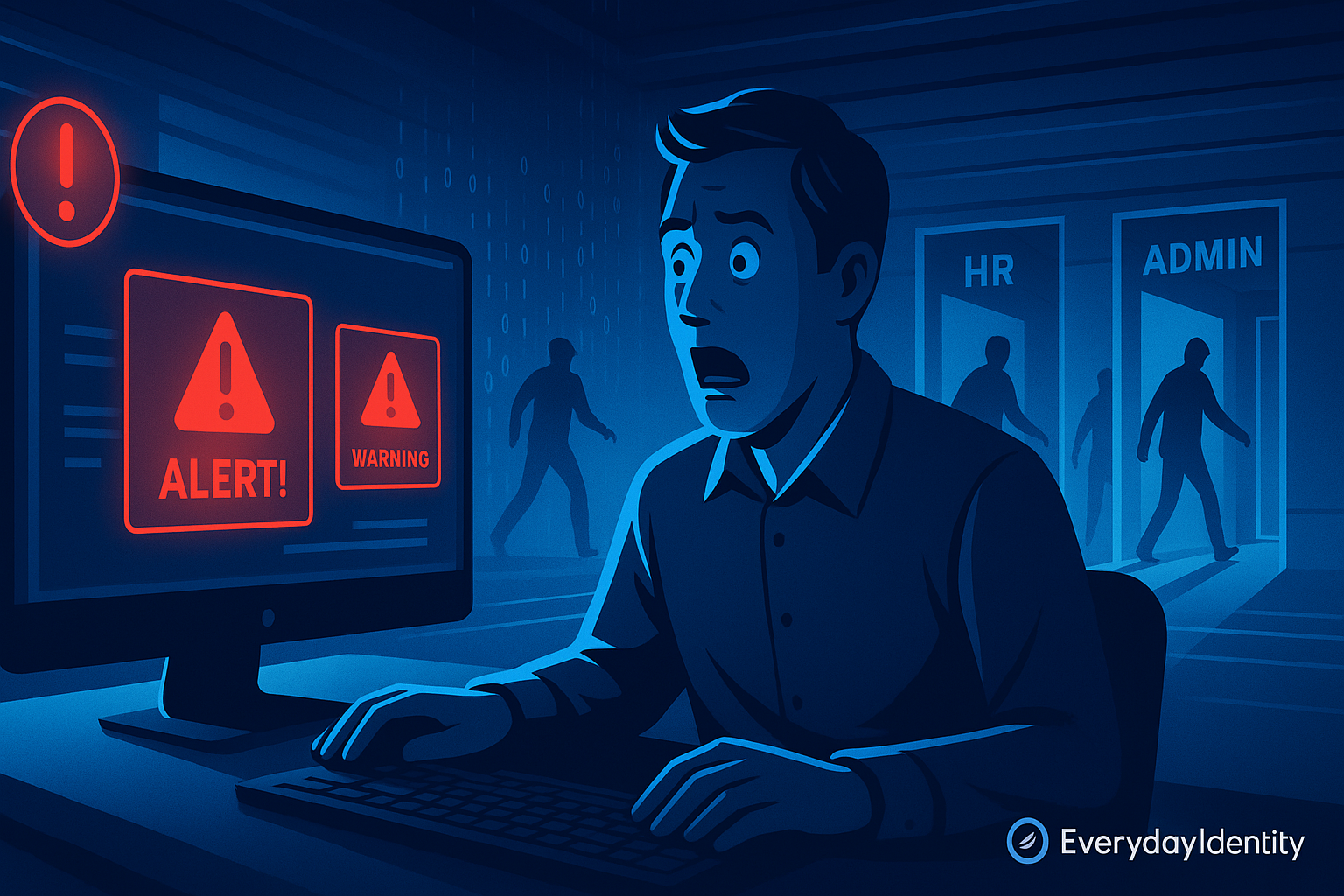
When a Phished Employee Has Admin Rights
TL;DR
Phishing remains one of the most effective initial access methods for attackers—but the real risk begins when the compromised user has admin or privileged rights. In this post, we’ll dissect how privilege escalation turns a single click into a breach, the downstream impacts, and practical steps to contain the blast radius in your own organization.
The Real-World Scenario: One Click, Total Compromise
Let’s paint a picture. Imagine an employee in IT gets tricked by a spear-phishing email and unknowingly hands over their credentials. Now, if this user is a regular staffer, the attacker might get access to some files or messages. Annoying, yes. Catastrophic? Not usually.
But if the phished user is a domain admin, Okta super admin, or holds similar high-level rights, all bets are off. Suddenly, what should have been a contained incident becomes a full-blown, organization-wide crisis.
Attack Path: Step-by-Step
Initial Phishing
Attacker sends a convincing phishing email. User enters credentials into a fake login page.Credential Harvesting
Attacker now has the username and password—and, if MFA isn’t enforced, immediate access.Admin Account Compromise
If the phished account has admin rights (AD, Azure AD, Okta, etc.), the attacker can:- Create new privileged accounts (backdoors)
- Grant themselves broader permissions (RBAC/ABAC escalation)
- Modify security settings, disable logging, or wipe audit trails
- Access sensitive business systems, financials, HR data
- Launch further attacks (ransomware, exfiltration, supply chain manipulation)
Lateral Movement & Persistence
Even if caught quickly, attackers often create persistence (hidden accounts, scheduled tasks) or exfiltrate enough data to do long-term harm.Impact
- Regulatory fines (SOX, HIPAA, GDPR…)
- Massive incident response costs
- Loss of customer trust and reputation
- Potential job losses for IT/security leadership
Why Privilege Escalation Multiplies Risk
Privilege escalation is when an attacker leverages a compromised account to gain more access than the original victim had. If the initial target already has broad rights, there’s no need for escalation—they’ve hit the jackpot from step one.
Key Principle: Least Privilege
The best way to minimize the blast radius is by applying the principle of least privilege: users get only the access they need, and nothing more. No one should be running as admin for daily tasks.
Anatomy of a Privileged Access Failure
Here are some classic mistakes that turn a phish into a disaster:
- Admins using privileged accounts for email/web
All admin actions should be performed via dedicated accounts—never used for routine tasks. - MFA not enforced on admin roles
Multi-factor authentication should be mandatory for all privileged roles. - Overly broad role assignments
Don’t make everyone an admin “just in case.” Use RBAC/ABAC and review regularly. - Stale accounts and standing privileges
Remove access immediately when employees move roles or leave. Don’t leave orphaned admin accounts hanging around. - Lack of monitoring and alerting
If you aren’t watching for privilege changes, logins from new locations, or new admin accounts, you’re flying blind.
Best Practices: Defend Against the Worst-Case
Separate Admin & User Accounts
Force admins to have a regular account for daily use and a separate one for privileged tasks.Enforce Strong MFA Everywhere
Especially on any account with elevated permissions.Just-In-Time (JIT) Access
Grant admin rights only when needed, and revoke them automatically.Privileged Access Reviews
Regularly review who has admin rights—automate this where possible, and tie to HR moves/leaves.Audit & Alert
Set up monitoring for privilege changes, suspicious logins, and account creations.Security Awareness Training
Everyone, especially IT and privileged users, should be trained to spot phishing attempts and report them immediately.Incident Response Drills
Run tabletop exercises simulating a privileged account phish—how quickly can you respond?
Real-World Example
In a recent incident, a midsize company’s helpdesk admin fell for a spear-phish. The attacker used the helpdesk’s admin rights to reset passwords and gain access to the finance system, eventually wiring out $1.2 million before being caught.
The root cause? No separation of accounts, no MFA on admin logins, and zero privilege reviews in the past year.
Don’t Let a Single Click Take Down Your Org
Attackers will always go after your highest-value targets. By enforcing least privilege, reviewing admin access, and keeping MFA mandatory on all privileged accounts, you can make sure that a single phished employee doesn’t have the power to take down your entire organization.
CTA: Review Your Privilege Model—Today
- How many admins do you really have?
- Are they using separate accounts?
- Is MFA enforced everywhere?
- Do you have an access review schedule?
If you can’t answer these, now’s the time to act.
Further Reading
- 10 Essential ‘Be Safe’ Checklists for Home, Web, Devices, Finance, Social
- IAM 101: Privileged Access Management – Managing High-Risk Accounts
- Why MFA is Essential for Every Admin Account